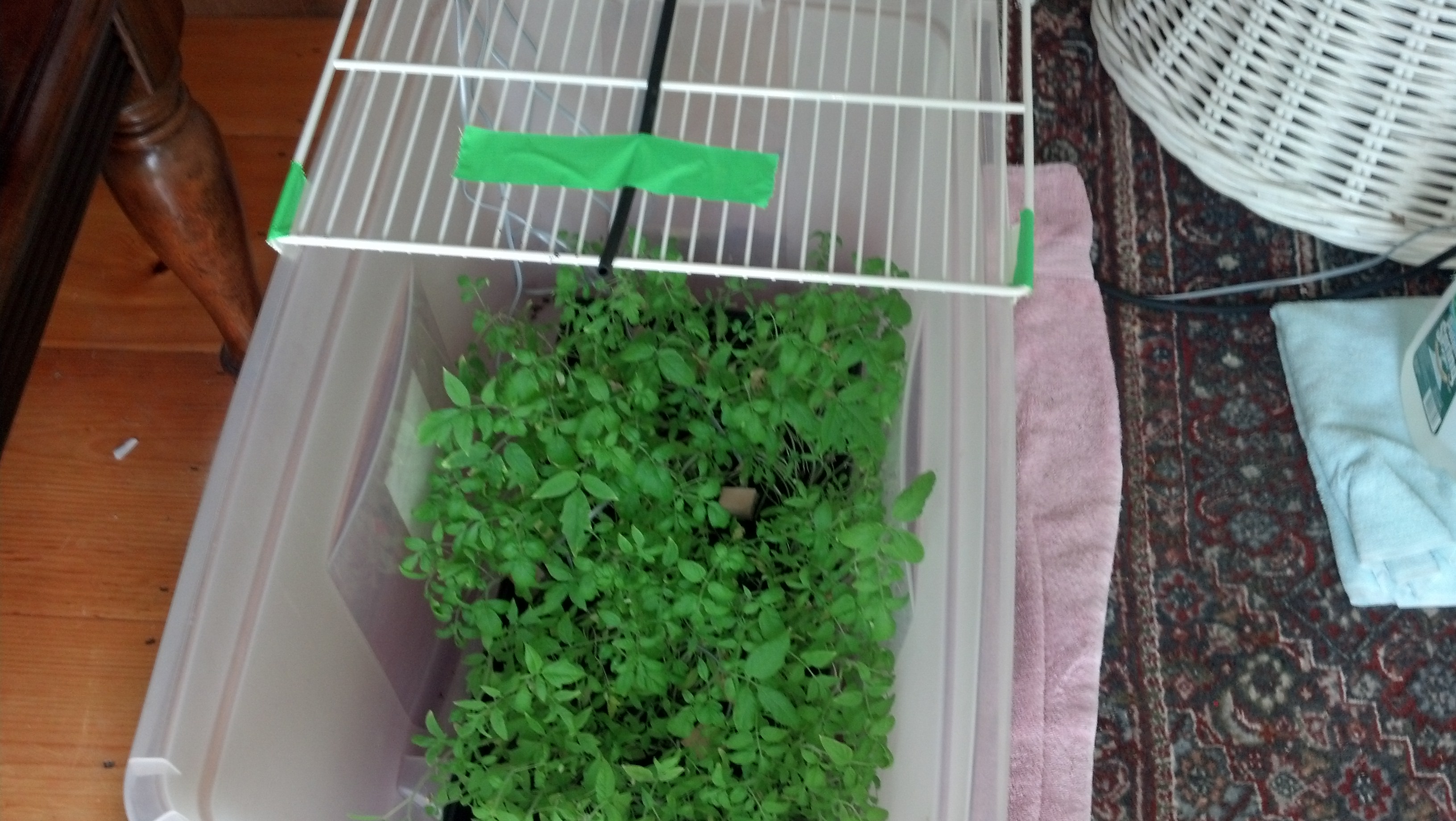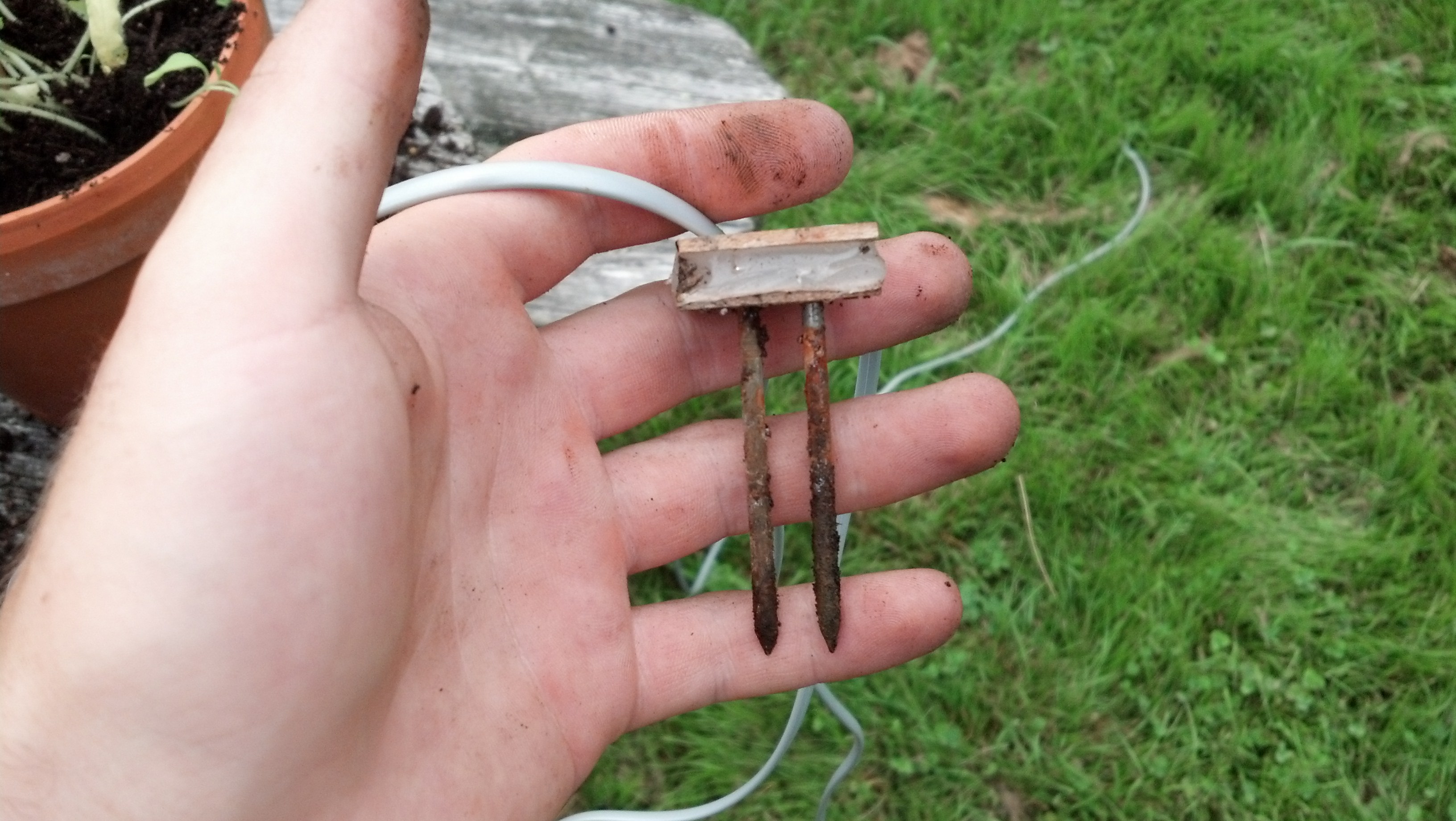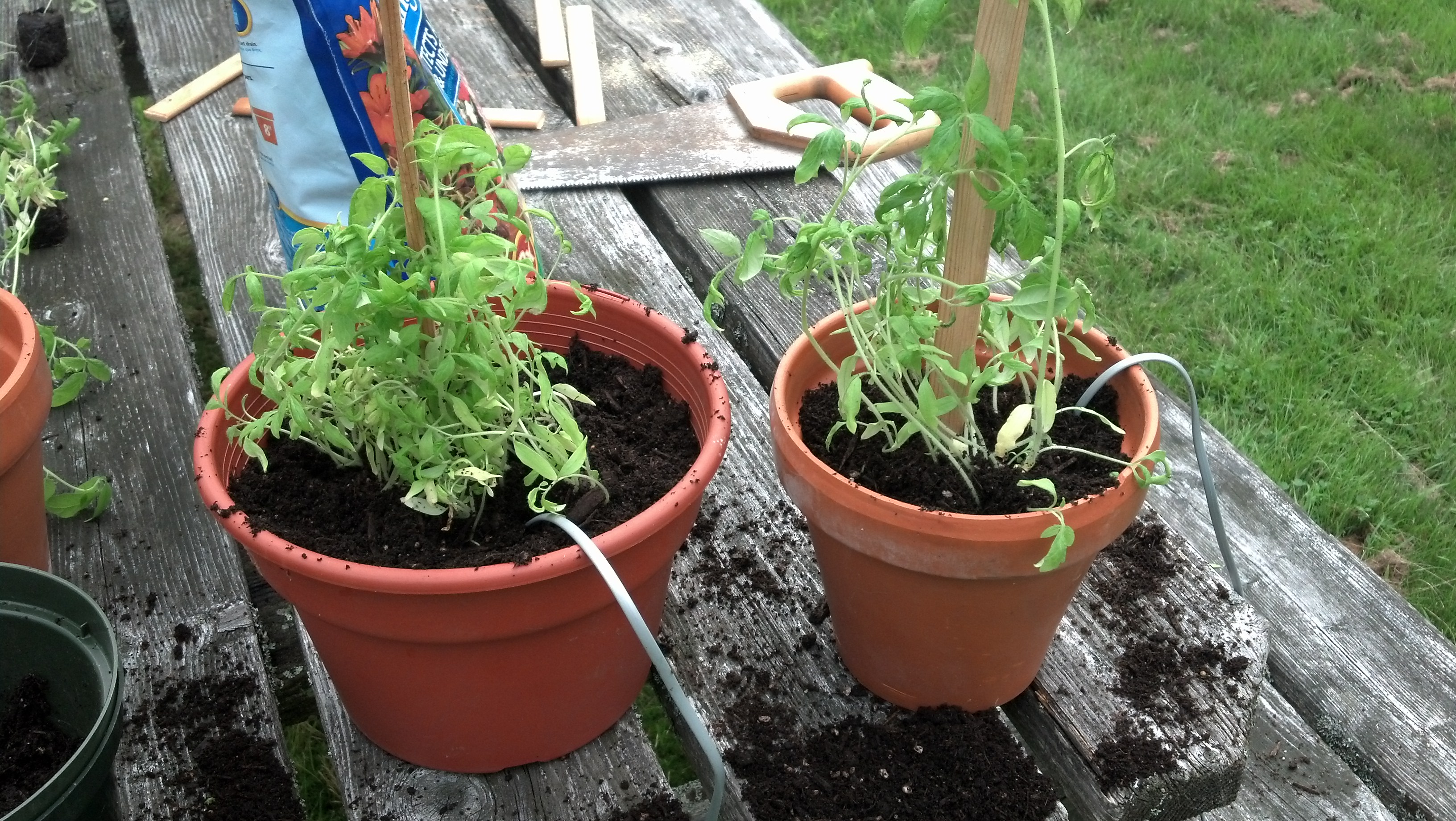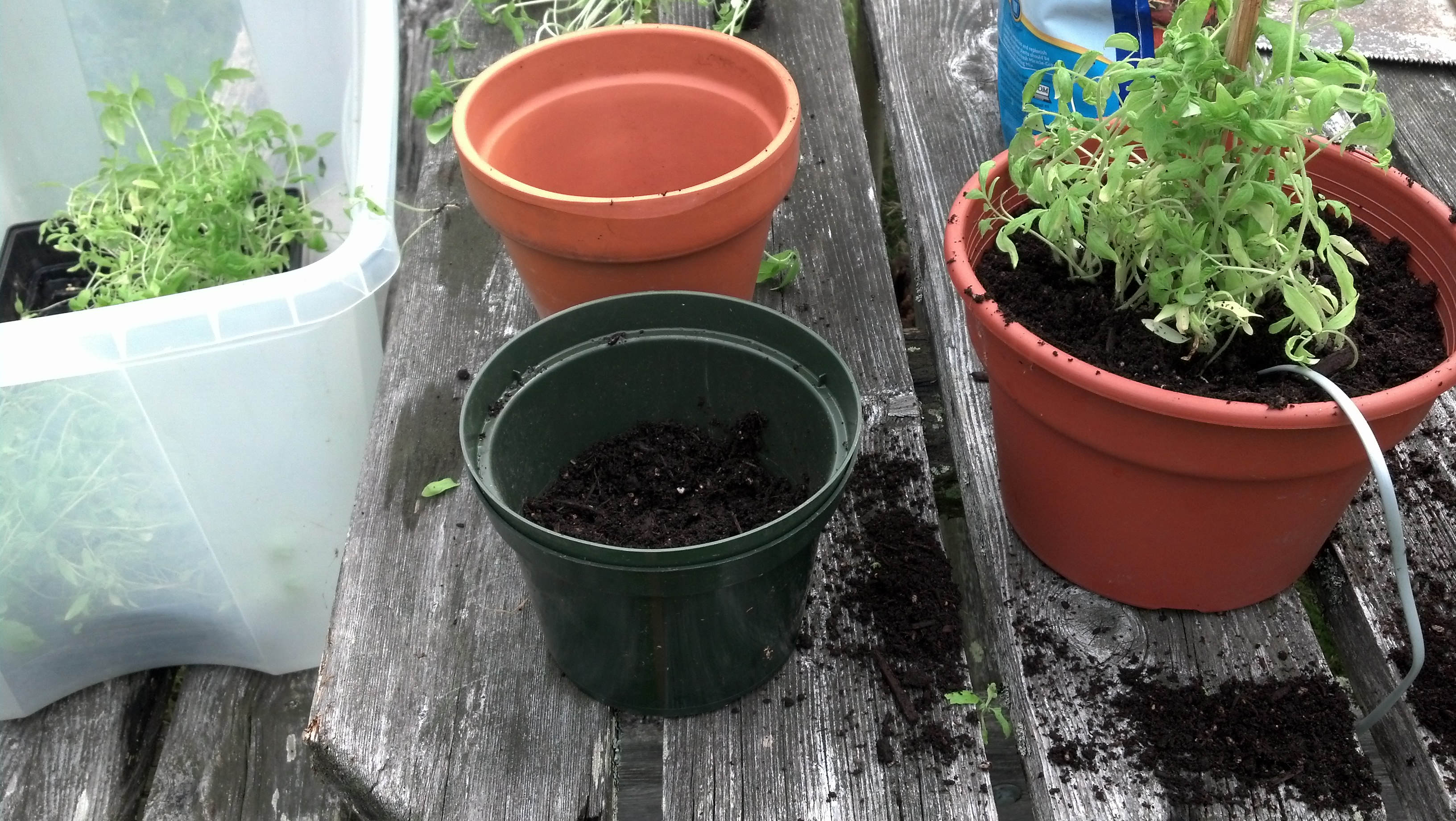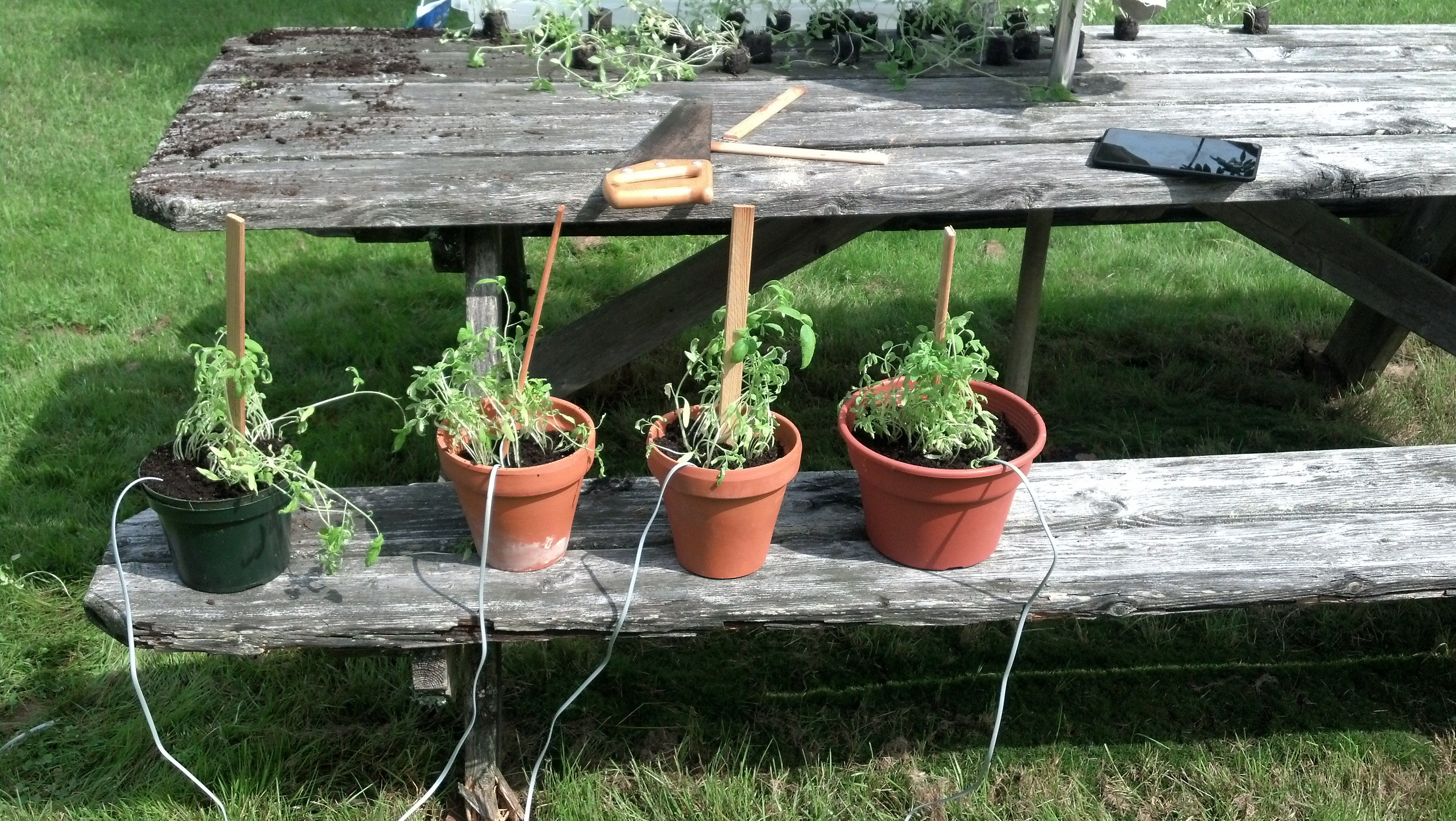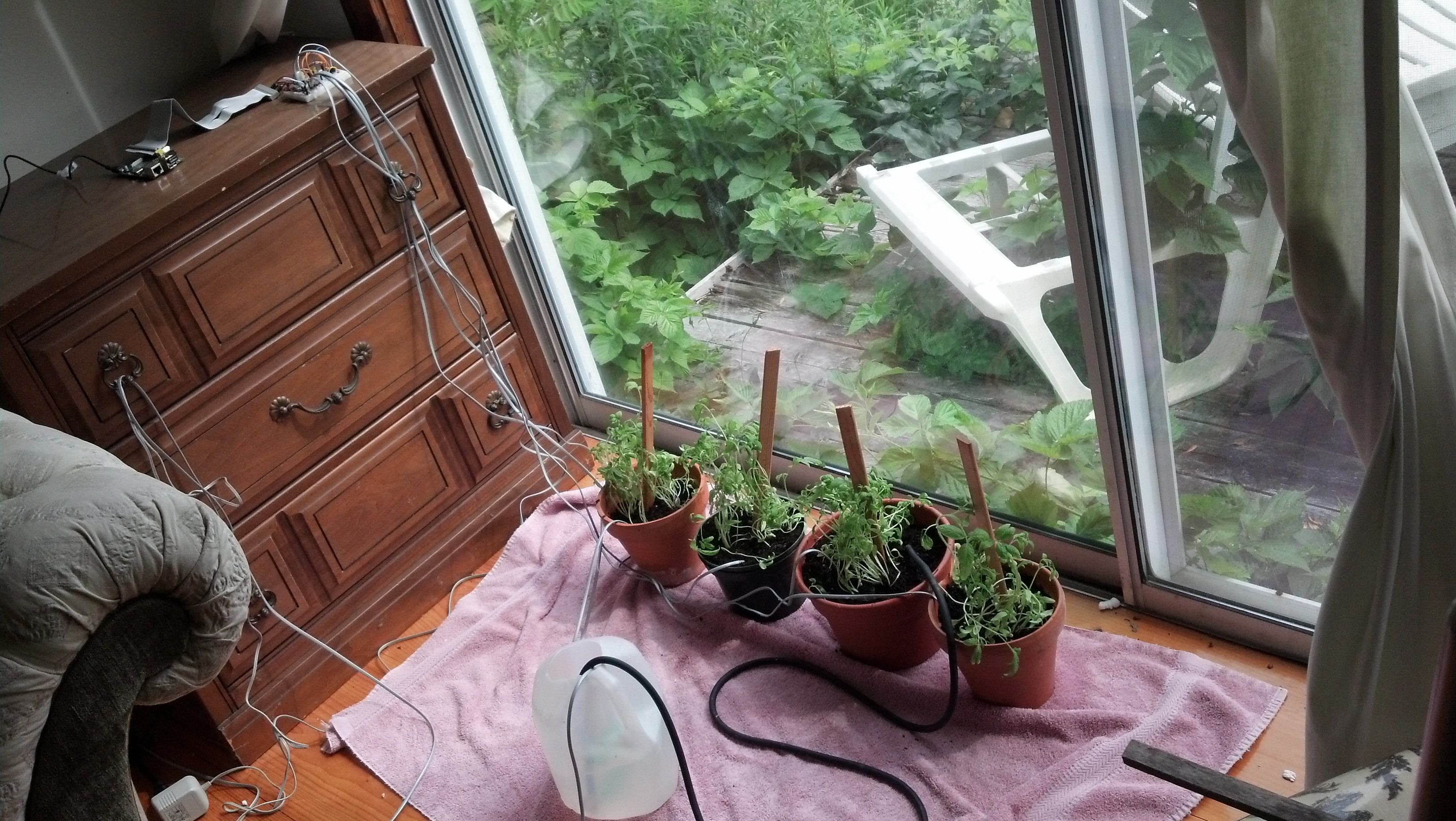A direct follow up to this post: https://esologic.com/?p=984
First, here’s a video:
I got the digital potentiometer working! It was very simple using the SPI library built into the Arduino software. All you have to do is address the chip and then write it a value between 0 and 255 to set the resistance value. Here is the code for this version, I’ve cleaned it up a bit since last time:
#include <SPI.h> //for using the digital pot
const int slaveSelectPin = 10; //for SPI, from example code
//Shift Register Setup, taken from www.bildr.og
int SER_Pin = 7; //pin 14 on the 75HC595
int RCLK_Pin = 8; //pin 12 on the 75HC595
int SRCLK_Pin = 9; //pin 11 on the 75HC595
#define number_of_74hc595s 4 //How many of the shift registers - change this
#define numOfRegisterPins number_of_74hc595s * 8
boolean registers[numOfRegisterPins];
int IR_rangefinder = 0; //The pin attached to the rangefinder
int detect_led = 2;
int setlevelMode0_led = 3;
int setlevelMode1_led = 4;
int seeking_led = 6;
int check_val = 8; //The arbitrary position above the sensor that indicates a "check" - the position that must be held in order to change the volume
int cycle_delay = 30; //a universal delay time for refreshing the check functions
void setup(){
//shift register setup
pinMode(SER_Pin, OUTPUT);
pinMode(RCLK_Pin, OUTPUT);
pinMode(SRCLK_Pin, OUTPUT);
clearRegisters();
writeRegisters();
//spi setup
pinMode (slaveSelectPin, OUTPUT);
SPI.begin();
//general LED's
pinMode(detect_led, OUTPUT);
pinMode(setlevelMode0_led, OUTPUT);
pinMode(setlevelMode1_led, OUTPUT);
pinMode(seeking_led, OUTPUT);
//Serial setup
Serial.begin(9600);
}
//integers to remember values off of the IR sensor.
int prelevel_0 = 0;
int prelevel_1 = 0;
int prelevel_2 = 0;
int prelevel_3 = 0;
int prelevel_4 = 0;
int prelevel_5 = 0;
int prelevel_6 = 0;
int prelevel_7 = 0;
int prelevel_8 = 0;
int prelevel_9 = 0;
int pre_positions[10] = {prelevel_0, prelevel_1, prelevel_2, prelevel_3, prelevel_4, prelevel_5, prelevel_6, prelevel_7, prelevel_8, prelevel_9}; // an array holding the positions
void loop(){
/*
The system works by sampling the sensor a number of times. It puts these values into an array.
Once all sample have been made, each value is compared to a like value. If every && evaluates to true, this means whatever object above the sensor has been there for the "cycle_delay" * the number of comparisions made.
It will confirm that the user wants their hand the be there and it was not acciential.
Think of the following loop as the ambient mode, the user can't adjust the volume from here, but they can enter the mode where they can adjust the volume.
It has much less precision by design.
*/
for(int i = 0; i <= 9; i = i + 1){
writebargraph(0,map(analogRead(IR_rangefinder),20,600,0,9));
pre_positions[i] = map(analogRead(IR_rangefinder),20,600,0,9);
if(pre_positions[i] == check_val){
Serial.println("Check Detected");
digitalWrite(detect_led, HIGH);
}
else {
digitalWrite(detect_led, LOW);
}
delay(cycle_delay);
}
for(int i = 0; i <= 9; i = i + 1){
Serial.print(pre_positions[i]);
Serial.print(",");
}
//Once it has been determined that the object above the sensor has been there for a long enough time, the system enters the secondary level set mode.
if (pre_positions[0] == check_val && pre_positions[1] == check_val && pre_positions[2] == check_val && pre_positions[3] == check_val && pre_positions[4] == check_val && pre_positions[5] == check_val && pre_positions[6] == check_val && pre_positions[7] == check_val && pre_positions[8] == check_val && pre_positions[9] == check_val ){
Serial.print(" - Pre Level Set");
Serial.println("");
delay(500);
setlevel();
delay(500);
}
else {
Serial.println(" - No Set");
}
}
void setlevel(){
/*
Very similar to the above topology. This version is much more precise, and has 30 comparison samples as opposed to 10.
It also writes to the digital potentiometer as well at the the same time as the bar graph.
*/
int level0 = 0;
int level1 = 0;
int level2 = 0;
int level3 = 0;
int level4 = 0;
int level5 = 0;
int level6 = 0;
int level7 = 0;
int level8 = 0;
int level9 = 0;
int level10 = 0;
int level11 = 0;
int level12 = 0;
int level13 = 0;
int level14 = 0;
int level15 = 0;
int level16 = 0;
int level17 = 0;
int level18 = 0;
int level19 = 0;
int level20 = 0;
int level21 = 0;
int level22 = 0;
int level23 = 0;
int level24 = 0;
int level25 = 0;
int level26 = 0;
int level27 = 0;
int level28 = 0;
int level29 = 0;
int positions[30] = { level0, level1, level2, level3, level4, level5, level6, level7, level8, level9, level10, level11, level12, level13, level14, level15, level16, level17, level18, level19, level20, level21, level22, level23, level24, level25, level26, level27, level28, level29};
digitalWrite(setlevelMode1_led, LOW);
digitalWrite(setlevelMode2_led, LOW);
boolean seeking = true;
while(seeking == true){
for(int i = 0; i <= 29; i = i + 1){
writebargraph(1,map(analogRead(IR_rangefinder),20,600,0,19));
digitalpot(map(analogRead(IR_rangefinder),20,600,0,255)); //Writes to digital pot
positions[i] = map(analogRead(IR_rangefinder),20,600,0,19);
Serial.print(positions[i]);
Serial.print(",");
delay(cycle_delay);
}
//Instead of comparing to a predetermined value, it compares it to the first value sampled. If this if statement is true, it means the users hand has stopped moving, indicating they would like to set the volume at that position.
if (positions[0] == positions[0] && positions[1] == positions[0] && positions[2] == positions[0] && positions[3] == positions[0] && positions[4] == positions[0] && positions[5] == positions[0] && positions[6] == positions[0] && positions[7] == positions[0] && positions[8] == positions[0] && positions[9] == positions[0] && positions[10] == positions[0] && positions[11] == positions[0] && positions[12] == positions[0] && positions[13] == positions[0] && positions[14] == positions[0] && positions[15] == positions[0] ){
Serial.print(" - Level Set");
digitalWrite(setlevelMode1_led, HIGH);
seeking = false; //Stops the loop and holds the last value on the bar graph and digital pot.
}
else {
Serial.print(" - No Set");
digitalWrite(setlevelMode1_led, LOW);
}
Serial.println("");
}
}
//This function will write to the shift registers -> the bar graph. It will write all of the values below the one specified HIGH and all above LOW. It also allows multiple sets of bar graphs
void writebargraph(int set, int led){
if(set == 0){
for(int i = 0; i <= 9; i = i + 1){
if(i <= led){
setRegisterPin(i, HIGH);
writeRegisters();
}
else if(i > led){
setRegisterPin(i, LOW);
writeRegisters();
}
}
}
if(set == 1){
for(int k = 10; k <= 29; k = k + 1){
if(k <= 10 + led){
setRegisterPin(k, HIGH);
writeRegisters();
}
else if(k > 10 + led){
setRegisterPin(k, LOW);
writeRegisters();
}
}
}
}
//A very simple function to write values to the Digital Pot
void digitalpot(int value){
digitalWrite(slaveSelectPin,LOW);
SPI.transfer(0); // enables the chip
SPI.transfer(value);
digitalWrite(slaveSelectPin,HIGH);
}
//SHIFT REGISTER FUNCTIONS.
//set all register pins to LOW
void clearRegisters(){
for(int i = numOfRegisterPins - 1; i >= 0; i--){
registers[i] = LOW;
}
}
//Set and display registers
//Only call AFTER all values are set how you would like (slow otherwise)
void writeRegisters(){
digitalWrite(RCLK_Pin, LOW);
for(int i = numOfRegisterPins - 1; i >= 0; i--){
digitalWrite(SRCLK_Pin, LOW);
int val = registers[i];
digitalWrite(SER_Pin, val);
digitalWrite(SRCLK_Pin, HIGH);
}
digitalWrite(RCLK_Pin, HIGH);
}
//set an individual pin HIGH or LOW
void setRegisterPin(int index, int value){
registers[index] = value;
}
If you have questions about the code please leave it in the comments.

